| Home |
| Acknowledgments |
| Conventions |
| Glossary |
| Maps |
| References |
| Links |
| Articles |
| Thumbnails |
| Species
list |
| Family |
| Next
species |
Additional Photos
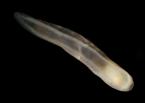
underside

side
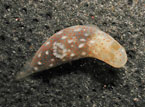
young

acid glands
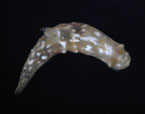
irregular spots
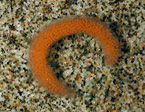
egg mass
_______________
GALLERY

Gymnodoris okinawae Baba, 1936
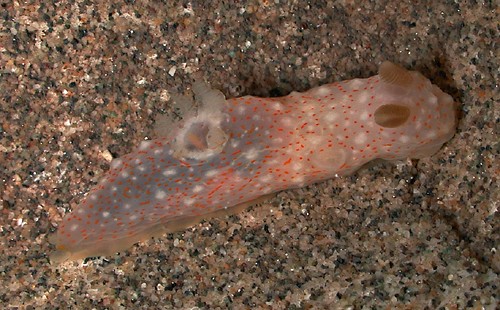
| Maximum size: 30 mm (Kay,
1979). Identification: This species has a cream body decorated with orange spots and white patches. In older animals, the orange spots often fuse into short lines and meandering, subcutaneous acid glands may develop. The notum is covered with blunt pustules. The gills form a complete ring around the anus and often have opaque white pigment at their bases. Natural history: Gymnodoris okinawae is a common species found in protected to exposed rocky habitats at depths of < 1 to 3 m (< 3 to 10 ft). Kay (1979) states that it feeds on the genus Elysia. We've recorded it feeding on Elysia in holding dishes but we've also recorded it feeding on Thuridilla and Colpodaspis suggesting a somewhat broader diet. (Note 1) It lays a bright orange egg mass that hatches in about 7 days in the laboratory. Distribution: Big Island, Maui, Lanai, Oahu, Kauai, French Frigate Shoals and Midway: widely distributed in the Indo-Pacific. Taxonomic notes: This species was first reported from Hawaii in Kay & Young, 1969. The more irregular spotting and less developed branchia in the two Midway animals might suggest that they're different (or, that they were both very young?). Photo: CP: 16 mm: Hekili Point, Maui; Oct. 27, 2004. Observations and comments: Note 1: In August, 2002 a G. okinawae (or Gymnodoris sp. #13?) was left overnight in a holding dish with an Elysia pusilla, a Thuridilla carlsoni and a Colpodaspis thompsoni. In the morning, all three had disappeared and the Gymnodoris was very "fat." |
| Thumbnails |
Species
list |
Family | Next species | Top |